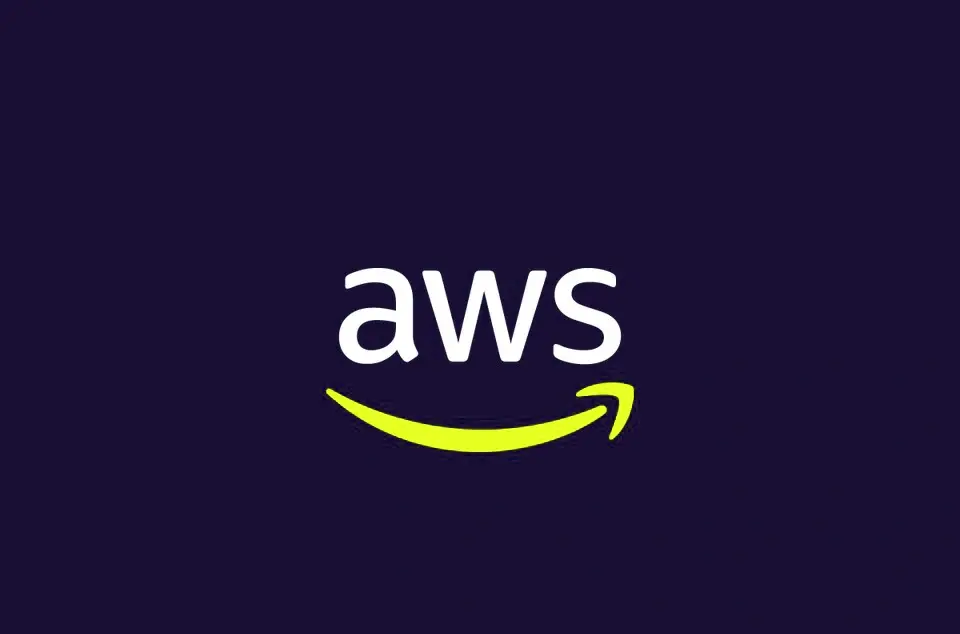Diving into the Cloud: Your Journey with Amazon Web Services (AWS)
Ever wonder how huge websites like Netflix or popular apps handle tons of users without crashing? Or how even small startups can get super powerful computing without buying expensive gear? The answer, a lot of the time, is cloud computing, and one of the biggest names in it is Amazon Web Services, or AWS.
Think of it like this: Instead of owning your own power plant (a big room full of computers and servers), you just plug into a giant, shared power grid run by Amazon. You only pay for the electricity (like computing power or storage space) you actually use. And you can get as much or as little as you need, whenever you need it. That's the cool part about AWS – it gives you computing power on demand, right over the internet.
So, why learn about AWS? Because it's everywhere! Small businesses, huge companies – so many digital services run on AWS. Knowing about it can open up big job opportunities, give you amazing freedom for your own projects, and truly let you build almost anything you can imagine online.
Let's kick off our journey!
Getting Started: Your First Steps with AWS
Stepping into AWS might feel a bit like walking into a huge supermarket with endless aisles. But don't sweat it; we'll walk you through the important stuff.
First Stop: Making Your AWS Account
Your very first move is to create an AWS account. Just head to the AWS website and look for the "Create an AWS Account" button. You'll need an email, a password, and a credit card. Don't worry, even for the free stuff, it's just to check you're real. You won't get charged unless you go past the free limits.
Top Tip: AWS has a generous Free Tier. This means many services are free for a whole year (or even forever for really small usage). It's awesome for learning and trying things out without running up a bill. Just keep an eye on those limits!
Your Control Center: The AWS Management Console
Once you log in, you'll see the AWS Management Console. This is your main dashboard, your control panel – basically, where you run everything! It's a website where you can find, set up, and manage all of AWS's different services. It might look a bit much at first with all the icons, but you'll get the hang of it. That search bar at the top is your best friend!
Simple Ideas You Should Know
Before we explore the services, let's clear up some basic AWS ideas:
- Regions and Availability Zones: AWS has different Regions around the world (like "US East" or "Europe"). Each Region has several separate places called Availability Zones (AZs). Think of AZs as different buildings within a city, far enough apart so if one has a problem, the others are fine, but close enough to talk to each other super fast. Picking a Region close to your users makes things quicker, and using a few AZs helps your apps stay online even if one data center goes down.
- Scalability & Elasticity: AWS's Superpowers!
- Scalability means your app can handle more and more work. You can make it bigger (get a stronger server) or wider (add more servers).
- Elasticity means your resources can automatically grow and shrink as needed. Imagine a website that gets swamped during a big sale. AWS can automatically add more servers, then remove them when things calm down, saving you money. You only pay for what you use!
- Pay-as-you-go: This is exactly what it sounds like. Instead of buying expensive computers upfront, you pay for AWS services only when you use them, and only for the exact amount you use. This could be by the hour for a server, by the amount of data you store, or by how many times your code runs. It's super cost-effective for businesses.
- Security (The Shared Responsibility Model): Security is a huge deal with AWS. They use a "shared responsibility" idea:
- AWS secures the cloud: They handle the security of their buildings, computers, networks, and everything behindthe scenes.
- You secure inthe cloud: You're in charge of protecting your own data, deciding who can get to your stuff, setting up your own network safety (like firewalls), and making sure your apps are secure. It's a team effort!
Your First Services in the Cloud: Basics for Beginners
Let's check out some core AWS services you'll probably bump into first.
Amazon EC2 (Elastic Compute Cloud): Your Virtual Computers
Think of EC2 as renting a computer in the cloud. You can pick different sizes (like choosing a laptop with certain power), operating systems (Windows, Linux), and get them running in minutes.
- What it is: A service that gives you "computer power" you can easily adjust in the cloud. Basically, it's a virtual computer.
- Common Uses: Running websites, web apps, databases, software development tools, and almost any other computer task you'd normally do on a real computer.
- Simple Idea: Instead of buying a server that sits in your office, you're "renting" a powerful virtual computer from Amazon's huge data centers.
Amazon S3 (Simple Storage Service): Your Online Hard Drive
S3 is like having an incredibly huge, super-organized online storage space for all your digital files. You can put anything in it – photos, videos, documents, website files, backups.
- What it is: Storage for any kind of digital "object" (like files), built to hold huge amounts of data from anywhere. Data lives in "buckets."
- Common Uses: Storing website pictures and videos, backing up important data, hosting simple websites, and collecting lots of data for analysis.
- Simple Idea: It's a massive, reliable, and safe place to store your files online. Think of it like a super-sized Dropbox for your apps and data.
Amazon RDS (Relational Database Service): Databases Without the Fuss
Managing a traditional database computer can be a huge headache – fixing problems, making backups, making it bigger, keeping it safe. RDS takes all that pain away.
- What it is: A service that makes it super easy to set up, run, and grow a standard database in the cloud. It works with popular database types like MySQL, PostgreSQL, and SQL Server.
- Why it's Useful: AWS handles all the tricky parts of running the database server for you. You just focus on your data and what your app does.
- Simple Idea: You get a ready-to-use database that Amazon manages, so you don't need to be a database expert or worry about the computer it runs on.
Amazon VPC (Virtual Private Cloud): Your Own Private Corner of the Cloud
When you start putting your stuff in AWS, you want it to be secure and separate from everyone else's. VPC creates your very own private, isolated network inside AWS.
- What it is: A service that lets you put your AWS resources into a private network that you set up. It's like having your own private data center, but in the AWS cloud.
- Why it's Important: You get full control over your network, including its addresses, sections, and how traffic flows. This is vital for security and keeping things organized.
- Simple Idea: Imagine AWS is a huge apartment building. VPC gives you your own private apartment (your network) where you decide where the doors and windows (security rules) are.
Stepping Up Your Game: Intermediate AWS Ideas
Once you're comfortable with the basics, it's time to learn how to manage who can do what, connect your resources safely, and keep an eye on them.
Identity and Access Management (IAM): Who Can Do What?
IAM is super important because it's how you decide who gets to use your AWS stuff and what they're allowed to do.
- Users: Individual people or apps that work with AWS.
- Groups: Collections of users, making it easier to give permissions to many people at once.
- Roles: Permissions you can give to AWS services (like letting a virtual computer read from your storage) or to temporary users.
- Policies: Documents that spell out exactly what permissions are allowed (e.g., "allow reading from this storage bucket").
- Simple Idea: IAM is like the security guard and key master for your AWS account. It makes sure only the right people (or AWS services) can open the right doors.
Deeper Dive into Networking: Inside Your VPC
Understanding VPC is key for building secure and well-connected apps.
- Subnets: Smaller sections within your VPC. You'll usually have public ones (for things that need internet access, like websites) and private ones (for things that shouldn't be directly online, like databases).
- Route Tables: Control where network traffic goes within your VPC and out to the internet.
- Internet Gateways: Allow your VPC to talk to the internet.
- Security Groups & Network ACLs (NACLs): Your Cloud Firewalls:
- Security Groups: Act like firewalls for your individual virtual computers (or other resources), controlling what traffic can come in and go out.
- NACLs: Work at the subnet level, adding another layer of security.
- Simple Idea: You're not just renting an apartment (VPC) anymore; you're designing the rooms (subnets) and putting in all the locks and alarms (Security Groups/NACLs) yourself.
Keeping an Eye On Things: Monitoring and Logging
You need to know what's happening with your AWS resources – are they working well? Any problems?
- Amazon CloudWatch: Watches your AWS resources and apps. It collects data (like how much computer power is being used, network traffic) and records events, and you can set alarms if something goes wrong.
- AWS CloudTrail: Records every action taken in your AWS account. This is super important for security checks and seeing who did what, when, and where.
- Simple Idea: CloudWatch is like your car's dashboard, showing you speed and fuel. CloudTrail is like a security camera recording everyone who enters and leaves your building.
Handling the Rush: Auto Scaling
Imagine your website suddenly becomes super popular! How do you handle all those visitors without your site crashing?
- Auto Scaling: Automatically adds or removes computer power (like virtual computers) based on demand. You set the rules (e.g., "if my computer power goes above 70%, add another computer").
- Simple Idea: It's like having a team of assistants who automatically hire more help when your workload gets too heavy, and then let them go when things quiet down. So, you only pay for the help you actually need!
The Next Level: More Advanced AWS Uses
Once you've got the hang of the intermediate ideas, you can start building more complex, smart, and cost-effective solutions.
Serverless Computing (AWS Lambda): Running Code Without Servers
This is a game-changer! With Lambda, you don't even think about the computers. You just upload your code, and AWS runs it automatically when certain things happen.
- Concept: You write small bits of code (functions) that are kicked off by events (like someone uploading a file, or clicking a button). AWS handles all the computers in the background.
- Benefits: Super cheap (you only pay when your code runs), grows as big as you need it to, and you don't have to manage any servers.
- Simple Idea: Instead of having a kitchen (server) running all the time, you have a magic button. When someone presses it, a chef (Lambda function) instantly appears, cooks one dish, and then disappears. You only pay for the food cooked, not for keeping the whole kitchen open 24/7.
Containers (Amazon ECS/EKS): Packaging Your Apps Neatly
Containers, like Docker, are a way to bundle up your app and all its pieces (code, tools, settings) into one neat, isolated package. This makes sure your app works the same way everywhere.
- Amazon ECS (Elastic Container Service): A service for running these Docker containers on AWS.
- Amazon EKS (Elastic Kubernetes Service): A managed service for Kubernetes, a popular system that helps you manage many containers easily.
- Why Use Them: They make it much simpler to build, launch, and grow apps consistently across different computer environments.
- Simple Idea: Imagine your app is a Lego model. Instead of just giving someone the instructions and a pile of loose bricks, you put your finished model into a clear box (container) so it always looks and works the same, no matter where it's moved.
Databases Beyond the Usual (Amazon DynamoDB): Super-Fast NoSQL
While RDS is great for standard databases, sometimes you need something different for really big, super-fast, or very flexible data.
- Amazon DynamoDB: A fully managed NoSQL database service. NoSQL databases are built for extreme speed, huge scale, and don't need a strict table setup like traditional databases.
- When to Use It: Perfect for apps that need lightning-fast responses no matter how big they get, like gaming, mobile apps, or smart devices (IoT).
- Simple Idea: If a standard database is like a perfectly organized spreadsheet for your data, DynamoDB is like a super-fast, flexible, and massive collection of individual, self-contained note cards that you can grab instantly.
Making Development Easier: DevOps on AWS
DevOps is all about bringing the people who write code and the people who run it closer together. It uses automation to get software out faster and more reliably.
- CI/CD (Continuous Integration/Continuous Delivery): Tools and practices that automatically build, test, and launch your code. AWS has services like CodePipeline, CodeBuild, and CodeDeploy for this.
- Infrastructure as Code (AWS CloudFormation): Writing code to set up and manage your AWS computers, networks, and databases. This makes your setup reusable, consistent, and easy to track changes.
- Simple Idea: Instead of manually building every part of your house (your setup) and putting together furniture (launching code), DevOps is like having blueprints (CloudFormation) and robots (CI/CD tools) that do it all automatically and perfectly every time.
Keeping an Eye on the Bill: Cost Management
It's easy to get excited and use lots of AWS services. Learning to manage your spending is a very important advanced skill.
- AWS Cost Explorer: Shows you visuals of how you're spending money, spots trends, and guesses how much you'll spend in the future.
- AWS Budgets: Lets you set custom spending limits that will alert you if your costs (or predicted costs) go over your budget.
- Simple Idea: These are your financial tracking tools, making sure you don't spend too much on your cloud resources.
Your Learning Path and Next Steps
AWS is a huge and always changing platform. The secret to mastering it is to keep learning and, most importantly, to practice hands-on!
- Get Your Hands Dirty: The best way to learn is by actually doing things. Use the Free Tier to start virtual computers, store files, and set up a simple database. Build small projects.
- Read the AWS Guides: AWS has excellent, super detailed guides for every service. They're your go-to source for information.
- Check Out Online Courses and Certifications: Websites like Coursera, Udemy, and Pluralsight offer structured courses. AWS also has official certifications (like Cloud Practitioner) that can prove your skills and help your career.
- Join the Community: Get involved in AWS user groups, online forums, and developer groups. Learning from others and sharing your experiences is super valuable.
Conclusion: The Power of the Cloud in Your Hands
Amazon Web Services is more than just a bunch of tools; it's a huge shift in how we build and run technology. From simple websites to complex AI systems, AWS provides the strong, reliable, and secure backbone that helps new ideas take off worldwide.
By understanding the main ideas and services, starting with the basics, and practicing consistently, you'll be well on your way to using the amazing power of the cloud. The journey keeps going, but there's no limit to what you can create. So, go ahead, jump in, and start building! The cloud is waiting for you.
Leave a comment
Your email address will not be published. Required fields are marked *



